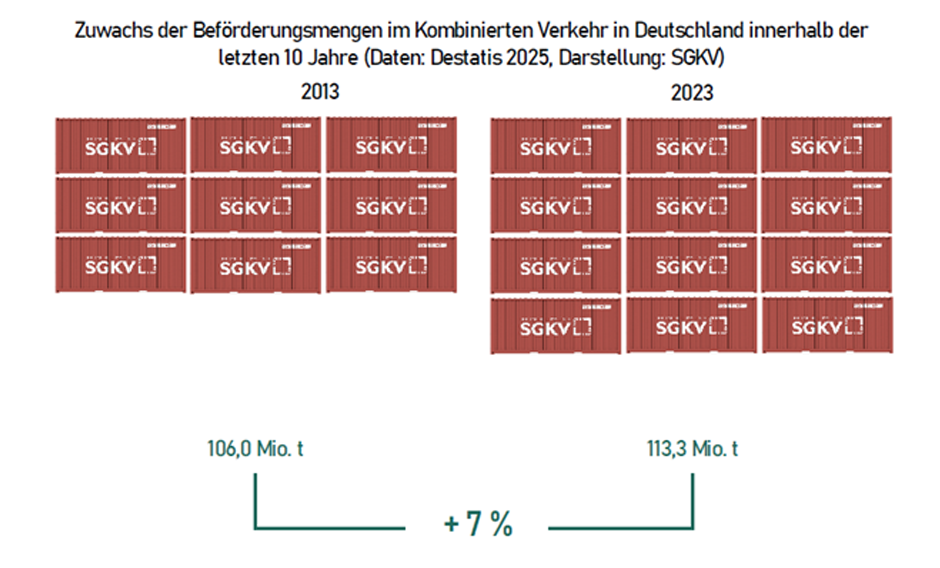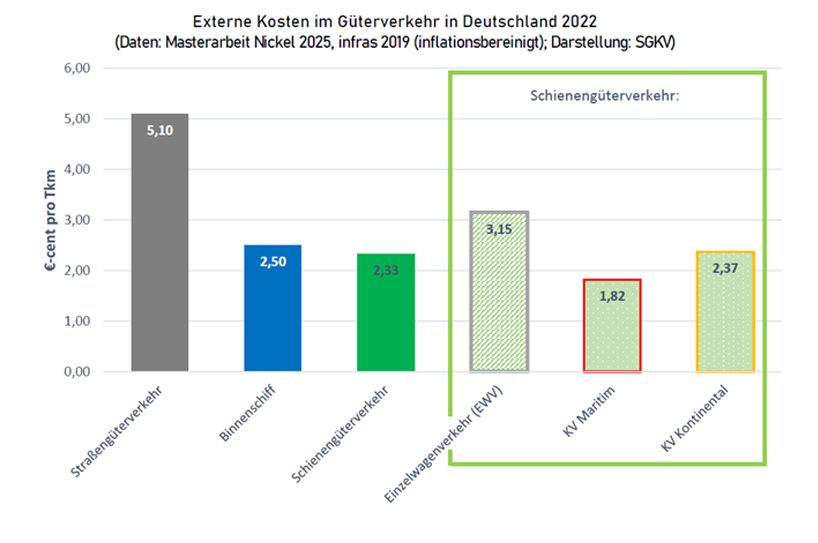Combined transport in figures
Basis 2023
57 Mrd TKM
Transport services in Germany
5,6 Mio.
Truck loads
in combined transport in Germany in 2024
in combined transport in Germany in 2024
4,5 Mio.
Tons of CO₂ saved
at 0.8 tons of CO₂ per lorry load
at 0.8 tons of CO₂ per lorry load
43 %
Share of combined transport in total rail freight transport (rail-based combined transport)
7,8 %
Share of rail freight in total freight transport in Germany
2,8 Mrd.
km by rail for distances per shipment Ø 500 km
The KV accounts for more than 40 % of rail freight transport.

positive trend in development until 2020

7 % growth in ten years

Rail has the lowest external costs in freight transport

Although combined transport accounts for only around 2.6 % of the total volume of goods, its importance goes far beyond this small percentage. With a share of over 41 % of rail freight transport performance, it clearly shows how heavily rail is already used in an intermodal context. If this mode of transport is now shifted back to road, this means that:
- A significant proportion of the goods that were previously transported efficiently and relatively environmentally friendly by rail would have to be transported by lorry.
- The shift in capacity would increase road congestion, emissions and accident risks – because rail is significantly more efficient and safer per tonne-kilometre transported.
- Previous investments in terminals, rail infrastructure and networking will be devalued if the share of combined transport continues to shrink and road transport is used more intensively.
- The decline in combined transport performance (with decreases of -6.8% and -8.2% in 2023) already indicates that the shift is taking place – and at a critical stage.
- Political goals such as security of supply, reduction of traffic and environmental pollution, and sustainable transport are seriously jeopardised if rail is weakened.
In short, every tonne lost as it switches from rail to road not only worsens competitiveness and the environmental balance sheet, it also shifts the balance in freight transport towards the more inefficient and riskier option.
That is why it is essential to take countermeasures now.
*All figures and graphics: Source SGKV